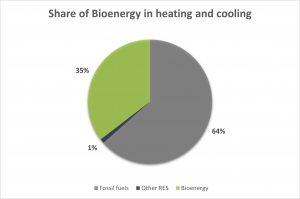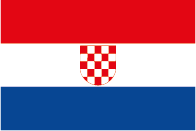Country profile: Croatia
Croatia
Population: 4,058,165
Area: 56,594 km2
Country profile
Croatia is a Southern European country located on the coastline of Adriatic Sea. Most of Croatia has a moderately warm and rainy continental climate. Forests cover approximately 47.9% of the land area of Croatia.
% of the H&C sector in the final energy consumption: 48,7%
% of renewables in the H&C sector: 36,5%
% of bioheat within renewables in the H&C sector: 96,9%
Biomass for heating in France

Croatia has a share of renewable energy of 28.5% of gross final energy consumption, well above the EU average. The key renewable technologies are hydropower, bioenergy and increasingly wind power.
Concerning 2030 targets, Croatia set the RES target of 36.4% of gross final energy consumption and particular target for heating and cooling 35.3 %.
Despite the fact that Croatia relies on coal derived energy to little extent, the final NECP does not envisage measures to reduce the use of coal by 2030.
Concerning heating stock age (including all technologies) it is comparable to the EU average, with approximately 55% of installation installed before 2002.
Concerning use of the bioenergy in heating and cooling, a particular challenge ahead of Croatia is an investment in the modern bioenergy installations, minimizing the ‘traditional’ use of bioenergy for heating.
Legal framework concerning air quality provides revised in 2015, a Programme for gradual reduction of emissions for certain pollutants in the Republic of Croatia with emission projections to 2020, 2025 and 2030 with a view to 2050. Croatia aims at emission reduction target of 18% of PM2,5 in the period 2020- 29.
Relevant documents
- Integrated National Energy and Climate Plan for Croatia (HR – EN)
- Reduction of National Emissions - National Air Pollution Control Programmes (HR – EN)
National initiatives
To see all initiatives carried by our partners in this country, go back to our map of initiatives and select the country for which you would like to get more information

